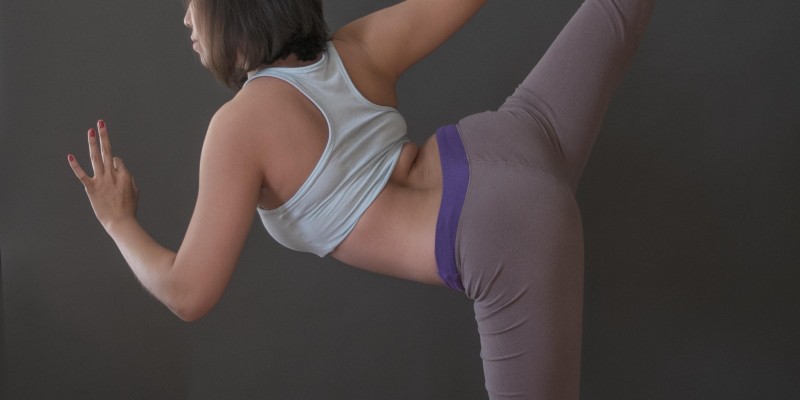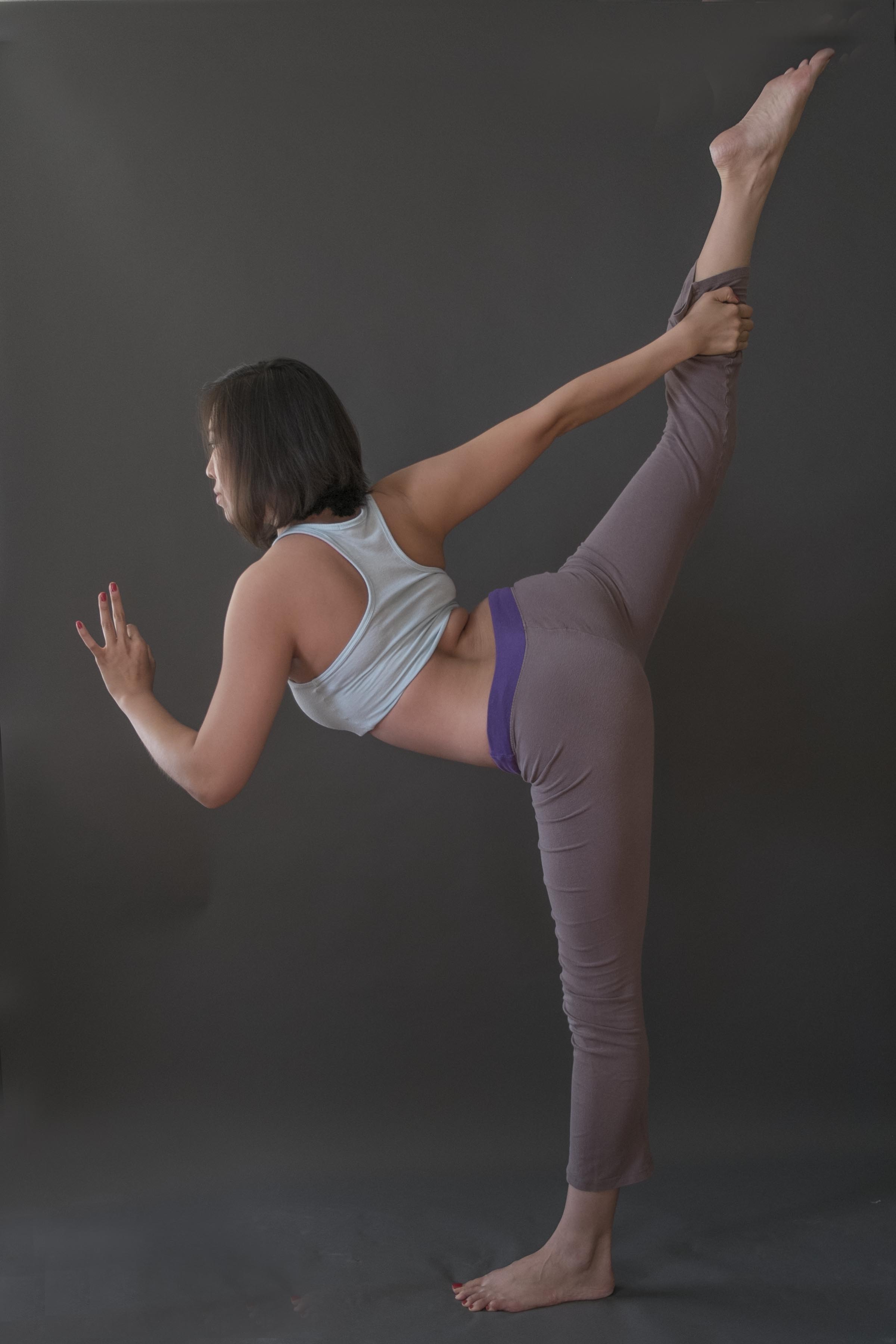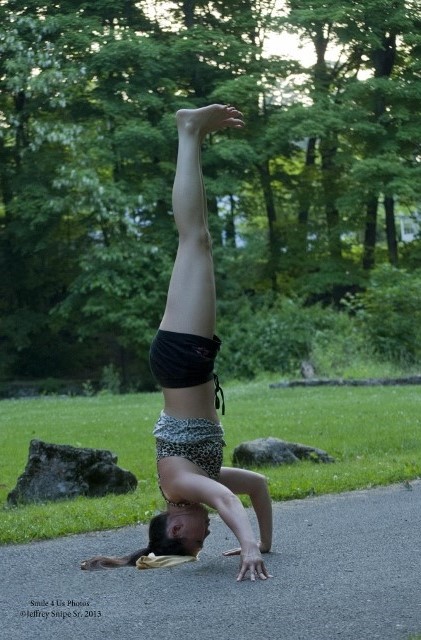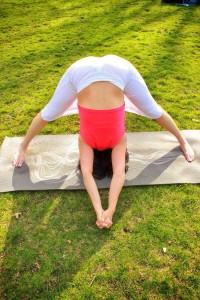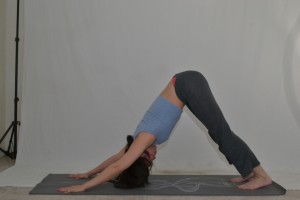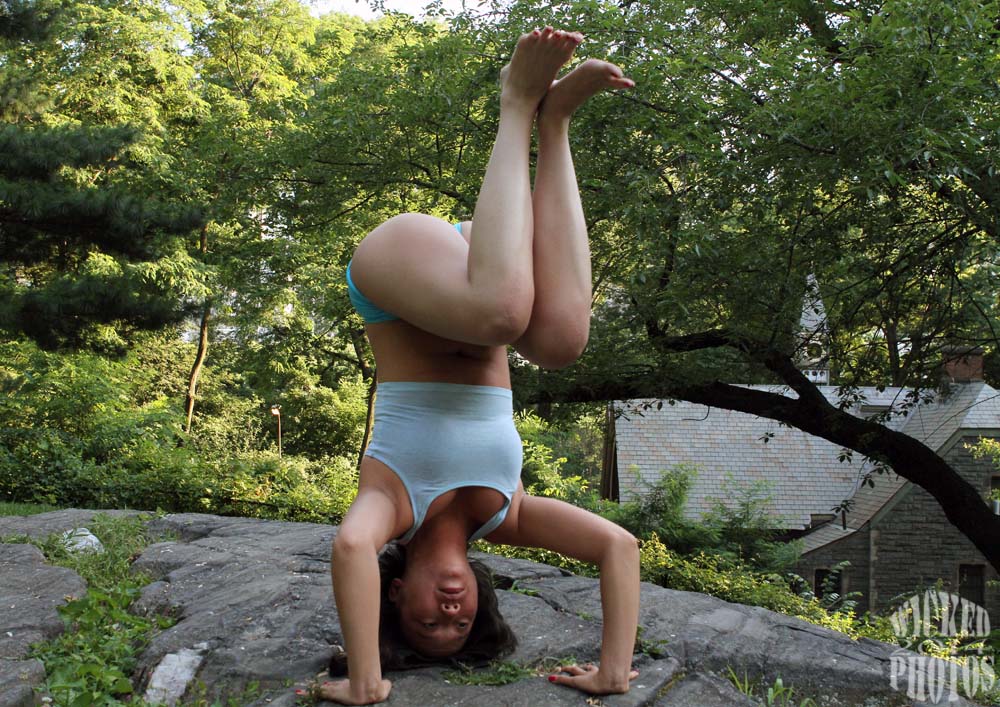Standing bow is sometimes also called dancer’s pose. It is one of the 26 asanas or postures in a Bikram hot yoga class, but it does make appearances in other classes as well.
Some people seem to can’t figure out how to get further in this pose so I’m going to give a few not-so-obvious tips to help you out. Obvious tips would be to work on your balance and to keep practicing. Well, while you do that, try these tips as well!
Tip 1: Bend your back
One thing that many people don’t realize about getting into a deeper standing bow is how much back bending is involved to get into the posture. As you raise your leg, you are supposed to keep yourself upright before folding over. Many people start folding their torsos over as soon as they feel any discomfort, but try to take notice of that discomfort and pull your leg up a little higher while staying upright (hence the back bend) before folding over. Obviously, keep that leg in the same position or higher as you fold over. This will help open up your hips some more as you fold over. As you can see in an old picture of myself in class, there is a bend in my back as I’m folding down.

Tip 2: Work on opening your hips
I suggest that you work on other postures that will open your hips, and start practicing hanumanasana (monkey pose, or put simply, a split). Once I started incorporating a split into every class, this pose started becoming easier to get into, as you can see from this picture about a year later:

One thing to keep in mind, however, is you want to try to level your hips. It is easier for us to open up your hips in this pose, but you want to try to get both hipbones parallel to the floor. If you can see in the below picture (I know it’s not perfect), my standing leg looks pretty stable, and that’s because my hipbones are facing the ground instead of opening up.
Tip 3: Start lowering your hand
As you get deeper and deeper into this pose, try to see if you can bring your hand down to your shins, which will help you pull your leg closer to your body and, thus, bring the foot closer to the sky.
